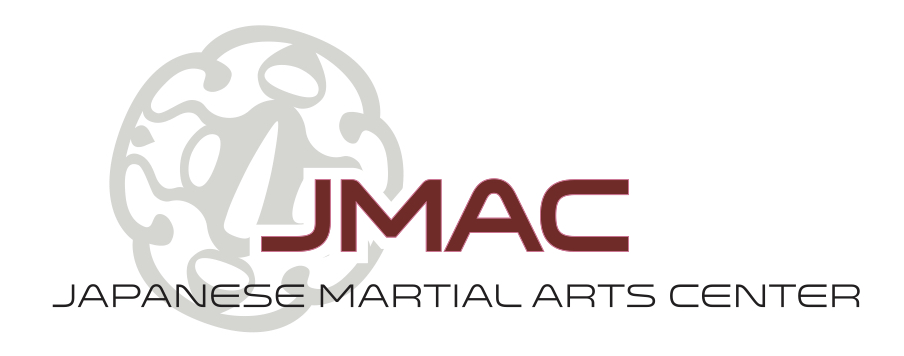Code of Conduct
Members of the Japanese Martial Arts Center (JMAC) are part of a special cadre of martial artists, dedicated to self-improvement through the study and practice of traditional Japanese martial arts. Because of the intensely personal nature of character development, the relationships between students and their teachers must be governed by a set of shared rules and mutual understanding. The following rules make up the JMAC Code of Conduct:
General Etiquette:
1. Maintain good personal hygiene.
Good hygiene shows respect for others; helps to ensure everyone.s personal health; and creates a positive, professional environment. It also helps to prevent injury to yourself and others.
- Keep yourself clean.
- Uniforms should be clean and neat.
- Keep your fingernails and toenails trimmed.
2. Always remove your shoes after entering the dojo.
Shoes may be worn in the entrance area near the door, but should never be worn on the training mat. Removing your shoes indoors is a Japanese custom and shows respect for the place in which you train.
3. Please remove all jewelry before training.
Removing your jewelry helps to ensure safety for yourself and others. It prevents personal injury as well as damage to the mats. It also shows respect for the atmosphere of austere training.
4. Do your best to arrive on time for class.
Punctuality shows enthusiasm for learning; minimizes disruption; and sets a good example for other students. If you do arrive after class has already begun, please perform the "bowing in" ceremony on your own. Step onto the mat, stay close to the edge and bow according to the customs of the art which you are practicing. Then sit quietly and wait for the instructor to ask you to join the class.
5. Request permission before leaving the mat during class.
Your instructor should be aware of your location and should also be alerted if you're not feeling well and need to leave. Requesting permission before leaving helps to minimize class disruption and shows respect for the instructor as well as the other students.
6. Let your instructor know if you will be absent for an extended period of time.
Your instructor cares about your health and well-being. He/She also plans lessons based on who is expected to be in class on any given day. Informing him/her of an expected absence shows involvement and respect.
7. Participate in dojo activities whenever possible.
A traditional dojo cannot thrive without the enthusiastic participation of its students. Your instructor is constantly giving time and energy to you in the form of instruction and guidance - this is your chance to give some energy back while expanding your involvement with those at the dojo outside of regular classes.
During Class:
1. Always train safely.
We always strive to train in a manner that is safe and prevents injury. The best way to do that is to be cooperative and respectful to those around you. As well, if you have a physical condition that limits your ability to perform certain techniques, please let the instructor know.
2. Do not "test" others' ability to perform the techniques
During class, we provide just enough resistance to allow our training partners to practice the technique. Class time is not fighting time, and learning occurs most efficiently in an atmosphere of mutual cooperation. We do not actively resist our partners. techniques unless advised to do so by an instructor.
3. Address instructors as "Sensei" in the dojo. Even if you call the instructor by his/her name outside the dojo, you should always address him or her as "Sensei" while in the dojo environment. It shows that you appreciate their years of hard work and training; that you are open to learning; and prepares the way for you to receive respect from others as you advance.
4. Always say "Hai!"
"Hai!" is the Japanese word meaning "yes!" Responding with "Hai!" shows you are open and enthusiastic about learning. It is a more committed, more formal and more respectful response than just saying "okay" or "yeah." Those words are not appropriate in a dojo.
5. Always bow before stepping on or off the mat.
It shows respect and reverence for the place in which you train; prepares your mind for concentrated practice; and helps divide the outside world from the training environment.
6. Do not disturb other students during class.
We are all striving to learn; each student has sacrificed his or her personal time and money to be here and needs to have concentration to practice the material provided by the instructor. Do not distract others by joking or talking unnecessarily.
7. Never teach other students unless you are told to do so by the instructor.
Martial arts techniques are very complex and as a student, you may not be aware of all aspects of a particular technique. Each student has committed to learning with a particular instructor and though you may have good intentions, your advice may not be welcome. It is up to the instructor to teach new material and to carefully judge when each student is ready to learn more.
8. Never handle other students. weapons without permission.
Weapons are deeply personal to each person and should be treated with respect and reverence as they belong to other people. Weapons can also be dangerous if not handled properly and there are subtle rules of etiquette of which you may not be aware.
